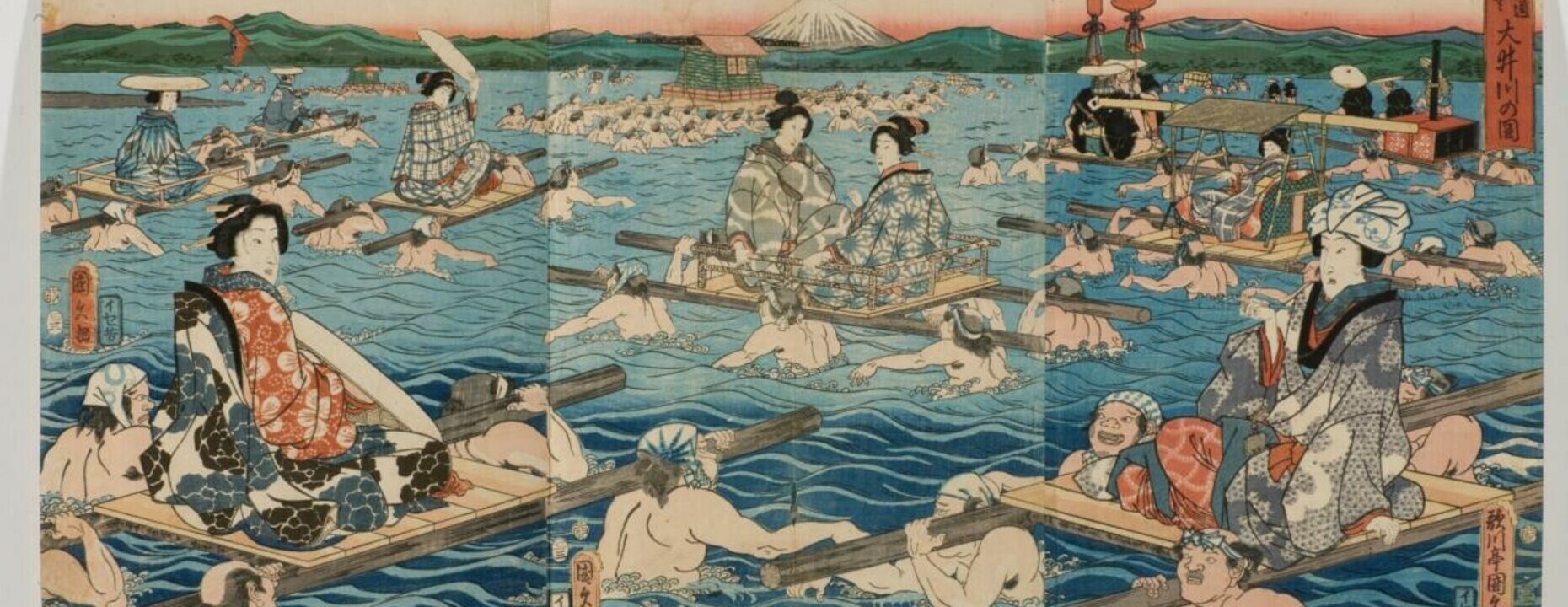Edo is the old name for the city of Tokyo. But it is also the name for the historic period from 1603 until 1868 when Japan was ruled by military leaders, called shoguns, that came from the Tokugawa family. They ruled Japan for a remarkable 250 years. Edo started as a small fishers' village, but it soon developed into a busy and overpopulated city in which commerce, arts and crafts and the entertainment business flourished and in which rich and poor lived side by side. A strict four class system existed during the Edo period: at the top of the social hierarchy stood the samurai followed by the peasants, artisans and merchants. The members of the four classes were not allowed to change their social status. The cultural renaissance of the time can probably be linked to the extremely rigid codes of behavior governing clothing and social activities. Advances in printing and education led to a highly literate population for its day. During the Edo period, popular culture flourished. New art forms like kabuki theatre and ukiyo-e prints became very popular especially among the townspeople.
In 1633, the shogun forbade travelling abroad and almost completely isolated Japan in 1639 by reducing the contacts to the outside world to very limited trade relations with China and the Dutch at the port of Nagasaki. Everything changed with the arrival of US Navy Commodore Matthew C. Perry and his 'black ships' in 1853. He came demanding trade and was soon followed by British and other westerners. The Edo Shogunate was forced to throw open Japan’s doors to superior technology and would surrender power to the emperor Meiji in 1867.This exhibition and catalogue will draw upon a wide variety of Edo period art forms in the AGGV’s extensive Japanese collection like paintings, prints, ceramics, lacquerwares, metalwares, textiles and clothing accessories, religious art and samurai paraphernalia. More than anything the prints known as ukiyo-e will reveal the life and customs of the Edo period, offering unrivalled material for the study of daily life across the length and breadth of Edo period Japan showing the different classes of people, their occupations, the costumes they wore, the manner in which the ladies dressed their hair, the armour and weapons of their warriors, their musical instruments, how they danced and amused themselves, their festivals, the strangers who came from foreign lands to trade with them, the layouts and architecture of their towns and cities, domestic scenes, how they rode their magnificent horses and traveled through Japan, their household utensils. The prints also reveal aspects of Edo religion, folklore/legends and historical scenes. Prints were appreciated by the commoners of the Edo period, while fine paintings, ceramics and lacquerwares reveal the tastes of the upper classes.
Organized and circulated by the Art Gallery of Greater Victoria with assistance from the Canadian Department of Heritage, Museum Assistance Program

